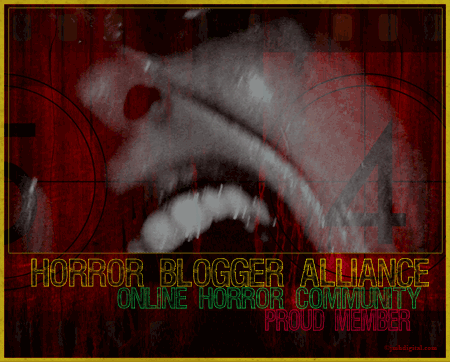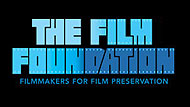

“Your luck has gone from bad to worse. You could have taken anything except my roses. The punishment for this simple theft is death!” says the Beast. Belle’s father responds, “Sir, I didn’t know. I meant no harm. My daughter asked me to bring her a rose.” The Beast replies, “Don’t address me as ‘sir.’ I’m called the Beast! I don’t like compliments. Don’t try to understand. You have fifteen minutes to prepare to die!”
My introduction to the work of French filmmaker Jean Cocteau was through his best known film Orpheus (which I saw at the Museum of the Moving Image more than a decade ago). Another of his better-known films is his adaptation of Beauty and the Beast. It is one of the most faithful adaptations of the famous  fairy tale, especially when compared to the 1991 Disney animated film (which itself is a wonderful film). I was lucky enough to catch a screening of Cocteau’s Beauty and the Beast on the big screen at the Museum of the Moving Image 11 years ago, and the experience could best be summed up with one word: enchanting. As much as I love the Disney version, Cocteau’s version will always be my favorite film adaptation of the fairy tale. This review of Beauty and the Beast is my entry in the Criterion Blogathon hosted by Criterion Blues, Speakeasy, & Silver Screenings.
fairy tale, especially when compared to the 1991 Disney animated film (which itself is a wonderful film). I was lucky enough to catch a screening of Cocteau’s Beauty and the Beast on the big screen at the Museum of the Moving Image 11 years ago, and the experience could best be summed up with one word: enchanting. As much as I love the Disney version, Cocteau’s version will always be my favorite film adaptation of the fairy tale. This review of Beauty and the Beast is my entry in the Criterion Blogathon hosted by Criterion Blues, Speakeasy, & Silver Screenings.
1946’s Beauty and the Beast follows a young woman who agrees to stay with the mysterious but wealthy Beast in exchange for her father’s freedom and well-being. Cocteau gathered together a terrific cast that included Jean Marais (as Avenant and the Beast), Josette Day (as Belle), Marcel Andre (as Belle’s father),  Mila Parely (as Felicie), Nane Germon (as Adelaide), Michel Auclair (as Ludovic), and Raoul Marco (as the Usurer). Marais is excellent in his dual role; he’s dastardly and scheming as Belle’s would-be suitor Avenant, and majestic yet animalistic as the sympathetic Beast (his conveyance of loneliness through his facial expressions is almost heartbreaking). Day is atounding as Belle; she shows strength and independence as well as love for her father. Parely and Germon are wicked and manipulative as Belle’s sisters, and Andre shines as Belle’s father, a merchant whose bad luck would have a serious impact on all of the main characters.
Mila Parely (as Felicie), Nane Germon (as Adelaide), Michel Auclair (as Ludovic), and Raoul Marco (as the Usurer). Marais is excellent in his dual role; he’s dastardly and scheming as Belle’s would-be suitor Avenant, and majestic yet animalistic as the sympathetic Beast (his conveyance of loneliness through his facial expressions is almost heartbreaking). Day is atounding as Belle; she shows strength and independence as well as love for her father. Parely and Germon are wicked and manipulative as Belle’s sisters, and Andre shines as Belle’s father, a merchant whose bad luck would have a serious impact on all of the main characters.
Cocteau’s direction draws strong performances from his cast and creates an almost poetic, dream-like atmosphere for the film. Cocteau’s screenplay is a largely faithful (but condensed) adaptation of Jeanne-Marie Leprince de Beaumont’s classic fairy tale, adding the subplot of Belle’s suitor Avenant. Henri  Alekan’s black-and-white cinematography makes great use of light and shadows (the interior castle scenes are my favorite scenes), and Claude Iberia’s editing moves the film at a brisk pace without calling attention to itself. The production design by Christian Berard and Lucien Carre (inspired by the illustrations and paintings of Gustav Dore and Jan Vermeer) creates a lavish but eerie castle (filled with living statues and human arms extending from the walls and tables), a storybook-style French farmhouse, and a foreboding forest.
Alekan’s black-and-white cinematography makes great use of light and shadows (the interior castle scenes are my favorite scenes), and Claude Iberia’s editing moves the film at a brisk pace without calling attention to itself. The production design by Christian Berard and Lucien Carre (inspired by the illustrations and paintings of Gustav Dore and Jan Vermeer) creates a lavish but eerie castle (filled with living statues and human arms extending from the walls and tables), a storybook-style French farmhouse, and a foreboding forest.
The costume designs by Antonio Castillo and Marcel Escoffier are elaborate and gorgeous to look at, and Hagop Arakelian’s Oscar-worthy makeup design  (particularly for the Beast) is magnificent. Georges Auric delivers a terrific, operatic score that enhances the fantasy elements of the film (including great use of a chorus). Cocteau’s Beauty and the Beast is a bona fide timeless French classic deserving of all its praise and love in addition to being one of the titles available on DVD and Blu-ray from the Criterion Collection in the U.S. Do not miss an opportunity to see this film on the big screen!
(particularly for the Beast) is magnificent. Georges Auric delivers a terrific, operatic score that enhances the fantasy elements of the film (including great use of a chorus). Cocteau’s Beauty and the Beast is a bona fide timeless French classic deserving of all its praise and love in addition to being one of the titles available on DVD and Blu-ray from the Criterion Collection in the U.S. Do not miss an opportunity to see this film on the big screen!






I wasn’t aware of this film and am so glad you brought it to my attention. I hope to see it sometime, and will be looking for all of the things you pointed out such as the light and shadows in the castle. I enjoyed reading your review!
Thanks! Glad you enjoyed it.
Oh, I love this film. So much great imagery. It’s what a fairy tale really should look like.
Pingback: Criterion Blogathon: Day 2 Recap | Criterion Blues .....
Seeing revivals on the big screen wasnt always such a picnic. The prints were often in poor condition. The Criterion Bluray, viewed on a large monitor, looks better than any print of it I have seen in a theater. That said, the loss of the 35 mm revival house is a crime against cinema.
Great review. I’ve never seen this and really feel as if I should now. Cheers!
It is beautiful and my favourite version too, it’s timeless fantasy and I enjoyed you noting the costume design. Thanks so much for joining us for this event!
You’re welcome! Glad to be a part of it.
Love this film. It is truly a masterwork especially given when it was created, toward the end of the occupation. I agree that the film is enchanting, and like Ruth, I wish I could have seen it on the big screen. Also agreed that the interiors are gorgeous and modeling after the painters really enhanced the fantasy aesthetic.
Thank you again for participating!
You’re welcome! I was a little hesitant in taking on a second film for this blogathon, but I’m glad I did it. If you ever get a chance to see it on the big screen, don’t pass up the opportunity.
Man, you seem to see EVERYTHING on the big screen! Which is great, really… I’m not bitter…not at all. 😉
Now this one I haven’t seen at all, but everyone talks about how beautiful it is. Judging by the images & the trailer you’ve posted, I’d say they’re right. Something else about this film: I think it’s impossible to guess which year it was filmed. There’s something timeless about it (again, judging by the trailer).
Thanks so much for joining the blogathon and for bringing Beauty and the Beast to the party!
You’re welcome! Glad you enjoyed the review. It truly is a timeless film. Don’t miss a chance to see it on the big screen.